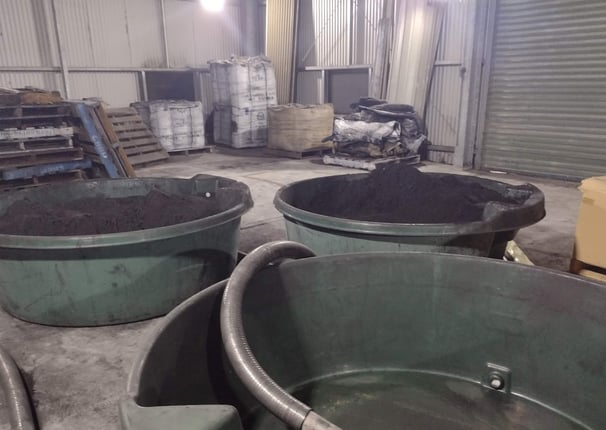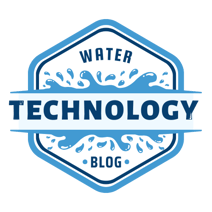Using Powdered Activated Carbon for Improving Taste in Potable Water: Tackling Geosmin and Beyond
Ensuring potable water is safe, clean, and palatable is a top priority for water utilities worldwide. While safety is paramount, taste and odor issues can erode public trust in drinking water, even when it meets regulatory standards. One common culprit behind unpleasant tastes and odors is geosmin, a naturally occurring organic compound that imparts an earthy, musty flavor. Fortunately, powdered activated carbon (PAC) offers a proven, cost-effective solution for improving taste and managing geosmin in potable water systems. In this blog post, we’ll explore how PAC works, its role in taste and odor control, and its effectiveness in addressing geosmin and other contaminants.
WATER PURIFICATIONENVIRONMENTAL TECH
5/28/20254 min read


Taste and odor problems in drinking water often arise from natural or anthropogenic sources, including:
Geosmin and 2-Methylisoborneol (MIB): These organic compounds, produced by algae and cyanobacteria in surface water sources (e.g., lakes, reservoirs), cause earthy or musty tastes and odors detectable at extremely low concentrations (as low as 4-10 ng/L).
Dissolved Organic Compounds: Industrial runoff, agricultural chemicals, or decaying organic matter can introduce unpleasant flavors.
Chlorine Byproducts: Disinfection processes can create compounds like trihalomethanes (THMs), which may affect taste.
Metallic Notes: Corrosion in pipes can impart metallic flavors, particularly in older distribution systems.
Among these, geosmin is particularly challenging due to its persistence and low sensory threshold. Consumers may complain about water quality even when it’s microbiologically safe, making effective treatment essential.
Powdered activated carbon is a finely ground form of activated carbon, a highly porous material derived from sources like coal, wood, or coconut shells. Its large surface area (often exceeding 500-1500 m²/g) makes it an excellent adsorbent for organic compounds, including those responsible for taste and odor issues. PAC is added directly to water during treatment, typically in a slurry form, and removed later through sedimentation or filtration.
Key Properties of PAC
High Adsorption Capacity: PAC’s porous structure traps organic molecules, including geosmin and MIB.
Versatility: Effective against a wide range of organic contaminants, not just taste and odor compounds.
Cost-Effective: Less expensive than granular activated carbon (GAC) systems, with flexible dosing based on need.
NSF/ANSI 61 Certified: PAC products designed for potable water meet strict safety standards.
How PAC Improves Taste and Odor in Potable Water
PAC works through adsorption, where organic molecules adhere to its surface. When added to raw or partially treated water, PAC binds with compounds like geosmin, reducing their concentration and eliminating associated tastes and odors. The process typically involves:
Dosing: PAC is mixed into a slurry and injected into the water at a treatment plant, often during coagulation or flocculation stages.
Contact Time: The water and PAC mixture is agitated to maximize adsorption, typically requiring 15-60 minutes.
Removal: PAC, now laden with adsorbed compounds, is removed via sedimentation, filtration (e.g., sand or membrane filters), or clarification.
Effectiveness Against Geosmin
Geosmin is notoriously difficult to remove due to its low concentration threshold and chemical stability. PAC excels in this area because:
It can reduce geosmin concentrations to below detectable levels (e.g., <5 ng/L) with proper dosing (typically 5-20 mg/L, depending on water quality).
It targets geosmin specifically without altering other water chemistry parameters, like pH or hardness.
Studies show PAC can achieve 80-95% removal of geosmin and MIB under optimal conditions, significantly improving palatability.
Benefits of Using PAC in Water Treatment
1. Targeted Taste and Odor Control
PAC effectively removes geosmin, MIB, and other organic compounds, delivering water that tastes and smells clean. This is critical for maintaining consumer confidence in municipal water supplies.
2. Flexibility and Scalability
PAC can be dosed as needed, making it ideal for seasonal taste and odor issues (e.g., algal blooms in summer). Treatment plants can adjust dosages based on real-time water quality monitoring, avoiding overuse.
3. Cost-Effectiveness
Compared to alternatives like granular activated carbon (GAC) filters or advanced oxidation processes (e.g., ozonation), PAC systems require lower capital investment and can be integrated into existing treatment infrastructure.
4. Broad Contaminant Removal
Beyond geosmin, PAC adsorbs pesticides, pharmaceuticals, and other trace organics, enhancing overall water quality.
5. Minimal Infrastructure Changes
PAC can be added to conventional treatment processes (e.g., coagulation or filtration) without major retrofitting, unlike GAC systems, which require dedicated filter beds.
Challenges and Limitations
While PAC is highly effective, it’s not without challenges:
Sludge Management: PAC becomes part of the treatment sludge, requiring proper disposal or recycling to avoid environmental impacts.
Contact Time and Dosing: Insufficient contact time or incorrect dosing can reduce effectiveness. Overdosing increases costs and sludge production.
Competition for Adsorption Sites: High levels of natural organic matter (NOM) can compete with geosmin for PAC’s adsorption sites, necessitating higher doses.
Temporary Solution: PAC is best for short-term or seasonal issues. For persistent taste and odor problems, GAC or advanced oxidation may be more sustainable long-term solutions.
Optimizing PAC Use for Geosmin Management
To maximize PAC’s effectiveness in managing geosmin and improving taste, water utilities should consider:
Water Quality Testing: Regular monitoring for geosmin and MIB levels to determine optimal PAC dosing (e.g., jar tests to simulate treatment).
PAC Selection: Choose high-quality, potable-water-certified PAC with high adsorption capacity for geosmin (e.g., wood-based or coal-based PAC).
Integration with Other Processes: Combine PAC with coagulation, flocculation, or filtration to enhance removal efficiency.
Seasonal Strategies: Increase PAC dosing during algal bloom seasons when geosmin levels spike, typically in warmer months.
Pilot Testing: Conduct small-scale trials to fine-tune dosing and contact times for specific water sources.
Case Studies and Real-World Applications
Lake Michigan Water Treatment (USA): Utilities drawing from Lake Michigan have used PAC to combat seasonal geosmin spikes caused by algal blooms. By adding 10-15 mg/L of PAC during treatment, plants reduced geosmin to undetectable levels, eliminating consumer complaints about earthy tastes.
Australian Reservoirs: In Australia, where geosmin and MIB are common due to warm climates, water treatment plants combine PAC with coagulation to achieve 90%+ removal rates, ensuring palatable drinking water even during drought-induced algal blooms.
Small-Scale Systems: Rural treatment plants with limited budgets have successfully used PAC as a low-cost solution for taste and odor issues, integrating it into existing clarifiers without major upgrades.
Recent advancements are enhancing PAC’s role in potable water treatment:
Enhanced PAC Formulations: Manufacturers are developing PAC with tailored pore structures to better target geosmin and MIB, improving adsorption efficiency.
Combined Technologies: Pairing PAC with ozonation or UV treatment can break down complex organics, making them easier for PAC to adsorb.
Real-Time Monitoring: Sensors for geosmin and MIB allow utilities to adjust PAC dosing dynamically, reducing waste and costs.
Sustainable PAC: Research into bio-based or recycled PAC aims to reduce the environmental footprint of production and disposal.
Powdered activated carbon is a versatile, cost-effective tool for improving the taste and odor of potable water, particularly in managing geosmin and other organic compounds. Its ability to target low-concentration contaminants, integrate into existing treatment systems, and deliver rapid results makes it a go-to solution for water utilities worldwide. By optimizing dosing, selecting high-quality PAC, and combining it with other treatment processes, utilities can ensure clean, palatable drinking water that meets consumer expectations and regulatory standards.
For water treatment professionals or municipalities exploring PAC, consult with suppliers like Calgon Carbon or Cabot Corporation for NSF/ANSI 61-certified products, and consider pilot testing to tailor solutions to your specific water source. With the right approach, PAC can transform “earthy” water into a refreshing, trusted resource.
Note: Always verify PAC products and dosing strategies with certified water treatment engineers to ensure compliance with local regulations and water quality goals.


